Perhaps it’s because my fascination with wildlife pre-dates my backyard farming adventures, that I’m committed to peaceful coexistence with predators. How we think about and deal with predators are charged topics – My message will delight some and enrage others. Please feel free to share your thoughts, but whatever your opinion, please be respectful of the “other side”.
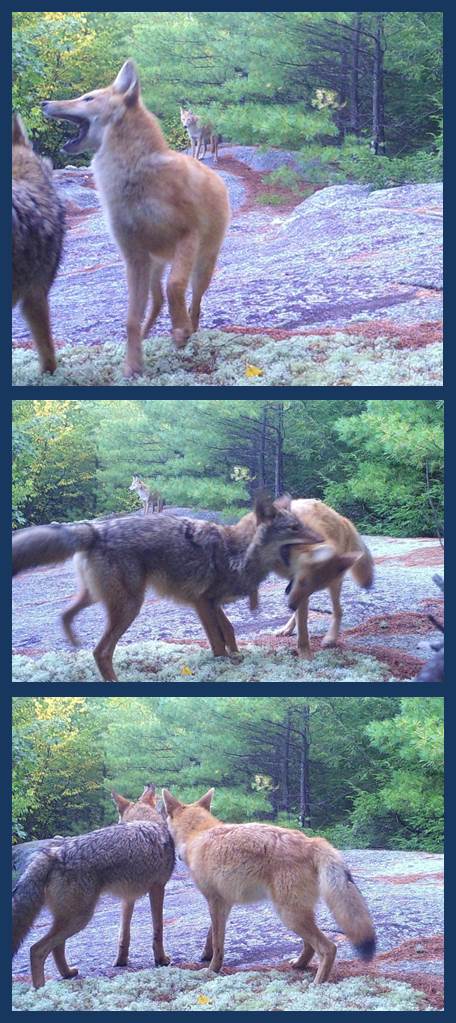
These playful coyote pups and their mom (background) were active both day and night, in a remote area where they were photographed by remote camera, repeatedly over several months.
10 Myths about wild predators (and how we deal with them)
The Nature of Predators
1. Predators are active only at night
The myth that most wild predators are strictly nocturnal is an important one to bust, because your pets and livestock are vulnerable to predation during daylight. Foxes, coyotes, fishers, bobcats, etc., have all been known to take domestic animals during daylight. They are smart and adaptable, and if a good meal is easier to grab during daylight, they’ll hunt during the day.
In my camera trapping endeavors, I have found that animals often considered nocturnal, are not necessarily so. What I have found so far is this:
- Where human density is high, I get few daytime predator photos.
- In wilderness areas with little human activity, many predators are captured on camera quite often during daylight (see photos of coyotes, above).
Perhaps those predators who live in our neighborhoods are more nocturnal just to avoid conflict with us.
2. Their activity patterns and the signs they leave are always the same
Again, wild predators are adaptable and their behaviors vary with the situation. That’s important to realize when you are trying to determine what just who snatched your chicken. Predators do tend have certain characteristic hunting, killing, feeding, caching, and marking behaviors. It will be of great benefit to learn about them, if you have livestock, but don’t take them as rigid rules. Many of these behaviors are not fixed. Some species are flexible enough to change their behaviors when doing so will be of benefit.
Here’s an example. Weasels have been known to decimate an entire flock of chickens, presumably with the intention of saving the excess for future meals. Sometimes people assume that if it didn’t kill multiple birds, it couldn’t have been a weasel. But suppose, after killing just one bird, the weasel picks up the scent of an approaching human or other large predator. That little weasel isn’t going to stick around for a face off.
3. Predators can “single-handedly” kill animals many times their own weight
Most solo predators do not typically kill animals much larger than themselves, unless the prey animal is ailing in some way. On the other hand, you might see “deer” listed in studies of stomach contents of small predators, such as fox and fisher. This unfortunately fuels people’s fear (and fear mongering), but those studies reveal only what the predator eats, not what it kills. Many predators are quite happy to scavenge remains of large animals killed by something else (such as a car, or a larger predator). I have numerous photos to prove this. Carrion is an excellent bait for a camera trap.
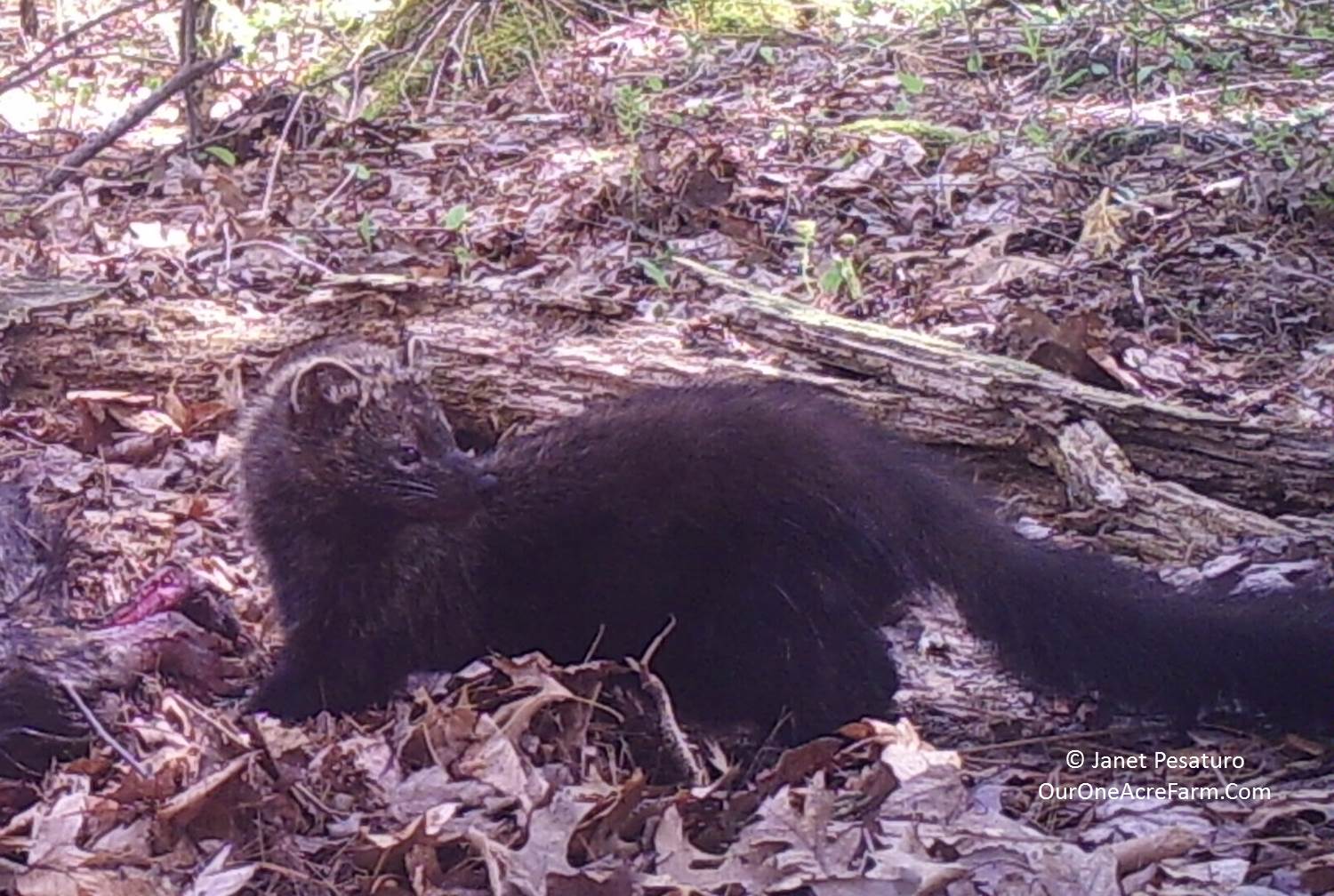
This fisher fed numerous times on the dead beaver used for bait at this camera trap You can see the beaver’s food at the far left.
4. Predators are “invasive” species
I hate the word “invasive” when applied to any form of wildlife. I use it myself because it has become common parlance, but it is so often used pejoratively that it has no place in science, in my opinion. Most narrowly, the word is used to describe non-native species which crowd out native species. But some people use it to label species which are abundant and dominant, whether native or not. And, unfortunately, many others use it to describe common species which they simply don’t like. It’s often used to describe the red fox, the eastern coyote, and predators in general.
- Red fox – This species has been called invasive under the assumption that it is an introduced species native to Europe. However, this 2012 genetic study shows that red foxes in eastern North America actually derive from native red foxes.
- Eastern coyote – The “invasive” label for this animal will probably remain a matter of debate for a very long time. In reality, it is evolving to adapt to the changing environment, which is what evolution is all about. Read more about this here.
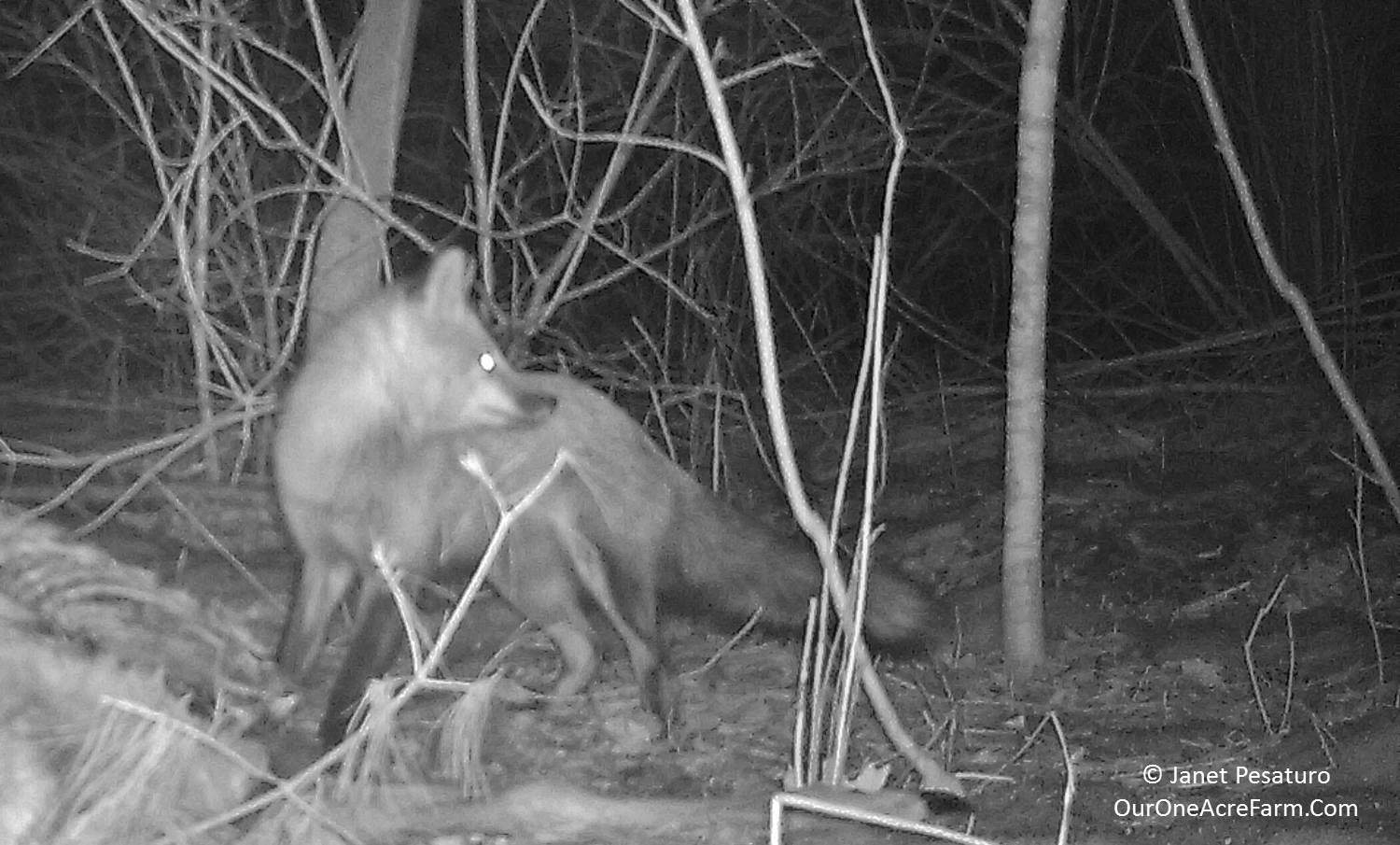
The red fox is often maligned as an invasive species introduced from Europe. However, genetic studies show that they are native.
People and predators
5. Predators should not be allowed to live in our neighborhoods
When we develop woodlands, fill wetlands, or plow river valleys, we are the invaders. The result of our invasion is a dramatically altered landscape, which will benefit some species and displace many others. Predators are merely trying to adapt to these massive alterations.
As much as we dislike the inconveniences associated with predators, they are necessary components of the food web, and often keystone species within their ecosystems. You can’t have food or water without nature, and you can’t have nature without predators. With more and more land lost to development, we must allow nature, predators and all, to thrive within our neighborhoods.
6. Most people accurately identify the species and estimate the weight of wild animals they see.
No way. We tend to over estimate, when we’ve seen something that is potentially dangerous. And for good reason: Exaggeration of danger favors self preservation, while under-estimation increases risk of harm. But on the other hand, exaggerated reports by casual observers lead to all sorts of fears and misconceptions about wildlife.
Occasionally I post wildlife quizzes on my facebook page for fun. One such quiz invited readers to identify the species in the photo you see below. This is a very clear photo showing the distinguishing characteristics, including the short tail, of a bobcat. However, about half the responders said they thought it was a cougar. They argued that the animal is too large, and the tail too long, for a bobcat. Well, it’s really hard to judge the overall size of the animal because there is nothing in the photo for scale. And, while the tail may in fact be a tad longer than that of the average bobcat, it is not all comparable to the very long tail of a cougar.
And that’s with a clear photo to stare at. How much less accurate we are, with a mere glimpse of an animal in the wild! So please don’t believe casual reports of roaming cougars in the New England suburbs and 40 lb fisher “cats” jumping from trees, screaming bloody murder. Respectable books and websites of wildlife organizations are more reliable sources than social media.
7. Killing predators is the most effective way to protect pets and livestock
In some situations, lethal action might be necessary to protect your animals, but it’s neither efficient nor effective as a primary strategy. Deterrence is generally better because the local wildlife quickly learn that your animals are too hard to get to be worth the trouble. Reliance on lethal control often means that you’ve already suffered loss by the time you take action. Further, relief from attack tends to be temporary, because another member of the same species eventually moves in to occupy the vacancy you have created. Thus, you find yourself in a never ending war with predators.
8. Lethal control of predators is okay because it will not impact predator populations.
Yes and no. A predator by predator discussion of this topic is far beyond the scope of this article. But generally, large and sparsely distributed species can be, and have been, impacted by direct killing at the hands of humans. Populations of small, abundant predators are less likely to be affected. In some cases (such as the western coyote), even concerted efforts to reduce their population have failed.
Nonetheless, it is unwise to use lethal control as a primary strategy in resolving conflicts even with abundant predators. The reason is that our environment is changing so quickly (due climate change, habitat conversion, introduced species, etc.) that it’s hard to predict how they will cope with these pressures. Add to that, the increasing popularity of suburban backyard farms. That’s a great trend in many ways, but not for the local wildlife, if lethal control is the method of choice. Common species today might be rare species tomorrow.
One example of a rather sharp and completely unexpected decline, is that of the house sparrow in Europe. This bird was so abundant that it was labelled a “pest” throughout Europe (as it still is in the US). Scientists are still uncertain of the causes of the decline, but the bird has already been Red Listed in the UK and is Endangered in the Netherlands. I don’t think it’s prudent to foster a mentality that any species is disposable. Once again, tolerance is a virtue in our rapidly changing world.
9. Human hunters can replace wild predators
This is true to a point. But wild and human predators change their prey populations in different ways. Wild predators, with no tools other than their own teeth and claws, are more likely to kill the very old, very young, injured and diseased. Human hunters, on the other hand, might select large, healthy “trophies”. Thus, human and wild predators shape their prey populations in different ways. And don’t forget that many wild predators also eat small mammals that humans consider pests. Wipe out the predators, and you wipe out the pest control.
10. Predator biologists learn about their subjects only from books
I’m not sure why – maybe it relates to tension between different demographic groups – but so often people dismiss wildlife biologists as pointy-heads who get all their knowledge from books. Instead, they turn to the people who are actually “out there” for information about wildlife. But wildlife biologists are the people “out there”, and some of them wrote the books, based on their years of direct observation, as well as exhaustive reading of the research of their predecessors. To appreciate the extensive field work by scientists who wrote the books, peruse the work of Jonathan Way (coyotes), David Henry (red fox), Roger Powell (fisher), and Uldis Roze (porcupine). All of them wrote delightfully informative (and sometimes entertaining) books about their adventures in studying their subjects in the wild.
Shared on: Thank Goodness it’s Monday, Natural Living Monday, Mostly Homemade Mondays, Backyard Farming Connection, Tuesdays with a Twist, Wildcrafting Wednesday, Homestead Blog Hop, HomeAcre Hop, From the Farm, Simple Saturdays, Simply Natural Saturdays, Homestead Barn Hop










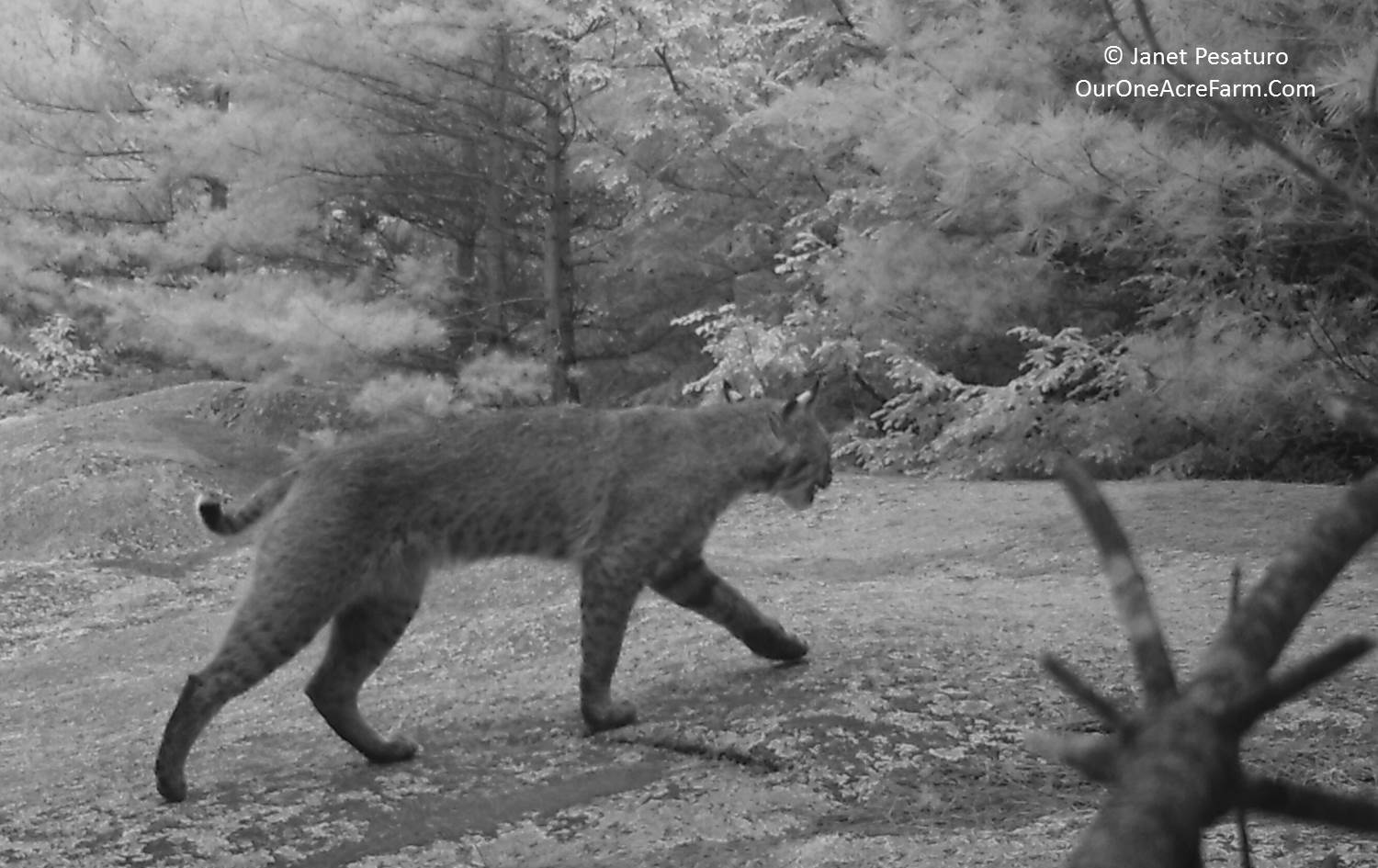
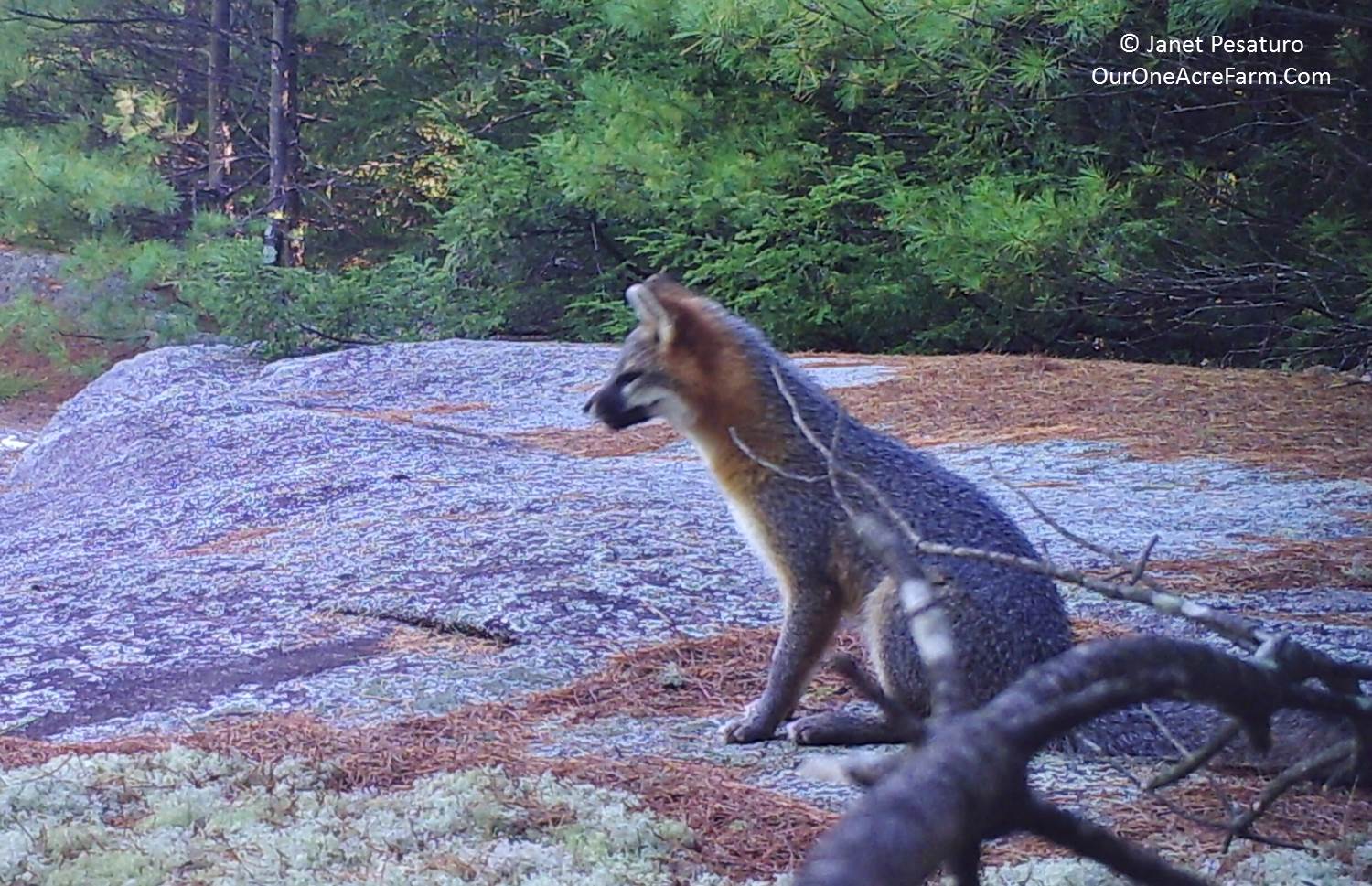
Amazing opening photo sequence! I love “mom” in the background
Thanks!
Great post! Here in Alaska, living side by side predators is something I grew up with. Seeing animals in the wild never gets old! Thanks for linking up with the Homestead Blog Hop.
Wow, I bet you really are side by side with predators. And with bigger ones than we have here! Thanks for stopping by.
In Alaska, unless you are not a farmer who lives near urban areas, you cannot keep livestock and deal with predators. I had an acquaintance who ended up leaving him because of all the headaches that they entailed (he had to be on horseback continuously armed and constantly watching over his herd of cows to take them to pastures and others, controlling with trap cameras that there were no predators and even so wolves and bears preyed on him a few cows. Everything so that at the end of the day it would not be so profitable to raise them or to eat, much less to sell them). That is why he stopped raising cattle and what he did was dedicate himself to hunting in order to obtain meat in a sustainable and self-sufficient way. In Alaska if you want meat it is best to hunt it is much more practical to get meat this way than to complicate your life with cattle. Apart from that it is also more sustainable
Thank you for this insightful post, Janet. As homesteaders it can sometimes be easy to develop an “us or them” attitude about predators, concerning our livestock. There has to be a balance. We cannot let our chickens free range and then get angry if a hawk or a fox gets one. It’s our responsibility to take necessary measures to protect our livestock BEFORE a wild animal can get them. Like you say, it is sometimes necessary to take lethal action, but prevention is the best measure. Really love your blog. You are a woman after my own heart. 🙂
Thank you so much for the kind words, Holly.
What a fascinating post! I’d like to feature it tomorrow at Tuesdays with a Twist. -Marci @ Stone Cottage Adventures
Thanks, Marcie, I’d love for you to feature it!!
I find this post really interesting. As a relative newcomer to “bush” area, I have been really trying to understand the wildlife around us, especially the predators, such as bears and wolves. I have been terrified of bears, but want to just have a healthy respect, along with understanding. I appreciate your thoughtful approach to this topic. Take care!
Thanks, Sharilee!
Pingback: Link Roundup - Life in Beta
I so agree. Until recently I lived in an area overrun with groundhogs, red fox, badger, and the occasional coyote or weasel. The coyote never bothered us because of our dogs, but I lost almost my entire flock of rare giant blue cochin chickens TWICE to fox and once to red tail hawk and my rare Flemish Giant buck (rabbit) to a weasel who managed to somehow get into the large outdoor cage. I am no stranger to wildlife and no stranger to loss because of them. My neighbor begged me to let him shoot the redtails out of our tree and my dad begged to shoot the fox. On both occasions I said no. I was the invader, not them. They were just feeding themselves and their families, same as I. Oh it hurt, a lot. When you are living on a very limited budget and are labeled by the state as “in poverty” you feel every loss on the homestead. For me this is not a hobby, it is our family food or extra income. But I am not going to be the one fighting nature all my life, I was born a part of it not it’s enemy. Each time I changed my system and learned a bit more, each time I started from scratch I was forced to find new ways of doing things. Necessity is the mother of invention after all. I had one super strong chicken yard after all that too! Oh, I would have shot the weasel though and made some nice mittens out of his hide. Also, good cat food. Thankfully he never came back. I really loved that rabbit he killed though… such a good daddy buck 🙁 I still have no idea how he got in that cage.
Thank you so much for taking the time to comment, MJ. Your attitude and willingness to adapt and adjust your strategies in order to coexist with nature are an inspiration!! You have made my day!
Can you explain to me why we are the invaders? do we come from another planet or something?
Because I honestly don’t get it. We are part of nature and of the trophic chain, we have evolved on this planet in the same way that other species have done. It is already another that we stop seeing ourselves as something separate from nature, as an alien and invasive species, and we begin to see ourselves as something that is part of the ecosystem. It is a philosophy of environmentalism that has always touched my morals a lot. We are not invading anything even if it means an alteration of the habitat. Do beavers with their prey not alter the habitat? Well, we do the same, only in a different way. If the fox has the right to feed his family and I also have the right to feed mine and if for that I have to sacrifice the animal that eats my cattle, then I do. It’s basic survival. I am not going to exterminate any species, at all, I respect nature and the species that live in it, but in the same way that the farmer protects his crops from pests, the same does the rancher protecting his livestock from predators and sometimes those conflicts they end with the death of the animal that tries to prey on your animals. On the other hand, don’t animals kill each other in nature to protect their territory and resources, because we have to be different?
There I leave the reflection
(ps: I only kill animals that attack my livestock as a last resort if I cannot drive them away, it is important that predators learn that my livestock is not touched)
Are you referring to my use of that word in #5? Perhaps you will understand if you reread the preceding sections carefully. I was using the same logic of people who label certain other species as invasive, to show that it is a matter of perspective. From the view of animals already living in a certain area, we are the invaders when we come in and destroy their homes.
But usually “invasive” in ecology refers to a species that did not evolve in a certain region. And, after being introduced to that region by humans (or sometimes colonizing the region on its own) it has become abundant and has rather dramatically altered the environment in a way that causes significant damage to other species.
North American beavers, when doing their thing in North America, are not considered invasive because they evolved in North America. However, the N. American beaver has been introduced to Finland where it is, in fact, considered invasive.
If we apply the same definition of invasive to Homo sapiens that we apply to all other species, then humans in North America would have to be considered an “invasive” species. We did not evolve on this continent, we are now abundant here, and we have most certainly had a detrimental impact on many species. You personally may never exterminate any species, just like no individual beaver in Finland has exterminated another species. But collectively humans in North America have negatively impacted other species, just like the beaver population in Finland has.
I would never suggest that people should try to minimize their impact or try to coexist with predators merely because “we have to be different”. Rather, I suggest it because we CAN be different. We are intelligent and creative and we are able to study and understand many complicated ecological problems. We also understand that our own continued survival as a species depends on maintaining a healthy environment, and the premise of my view that we should try to coexist, minimize our impact, and protect our environment is simply this: that the continued survival of our own species is a good thing. Of course, other people have the right to disagree.
Finally, to your last point: killing predators that kill your livestock teaches them nothing. Once you kill them they are dead, and dead animals can no longer learn. In fact evidence is mounting that killing them eventually increases livestock predation because other individuals move in to fill the niche vacated when one is killed. The new individuals then try to kill livestock and the cycle continues. The new individual is likely to be a young disperser, and young dispersing predators are even more likely to target livestock because their hunting skills are not yet well honed. A more effective way to reduce predation is to use deterrence measures that allow predators to live. That way, they really can learn to avoid livestock. Further, allowing them to live makes it possible for a stable social structure to develop so that there aren’t so many youths dispersing into your region.
You actually sound like a responsible homesteader and I don’t mean to come down on you, but I did want to address your points. In a way, I agree with you. I really dislike the term “invasive” when applied to any species, because it has come to mean “bad” and, as such, it has been used to spark community action by fueling hatred towards certain species. It is not unlike the predator hatred which is now firmly embedded into vast swaths of American society. But that’s a whole other issue.
Thanks for commenting, thanks for trying to coexist, and best of luck with your cattle.
Wonderful post. I’m curious as to what kind of Wildlife cams you use. Thanks.
Hi Boggins, I use Moultries – I’ve used M80, M880, M990, and M1100. All work well. One M880 malfunctioned, but the company replaced it promptly. Glad you enjoyed the post!
Pingback: Raising Shetland Sheep: Guide to Starting a Flock - One Acre Farm
Good post, I personally believe that you should never kill just “out of hand”.
Something people fail to realize is that predators are much less populated in areas than they think, 1 mountain lion covers a 20 mile radius. And they like every other predator are needed in nature. Now there are times though when I won’t hesitate, if human life is in Danger (rare) if the animal exhibits signs of rabies or if it is presenting a loss I absolutely cannot afford. Rabbit is fairly cheap, a cow on the other hand not so much. Also I keep a Jenny with my livestock and pretty much nothing messes with her but that is perception, my favorite method, because prevention saves me money or a hard decision
Agree, Luke. A guardian animal is a great strategy. An ounce of prevention is worth a pound of cure, as they say.
regarding that predators always hunt weak sick individuals etc. It is not entirely true, they also hunt many pregnant females and many offspring that not due to their condition will have worse genetics or be poorly adapted to their environment. In wolves, cases of surplus killing are not rare where, taking advantage of the winter and the condition of certain animals, they kill all the pregnant deer they can to eat their fetuses while they are alive. Not to mention bears, which do not seem to notice the weakness of salmon when catching them, they simply catch them at random, and that happens with many other predators (dolphins, killer whales, sharks, etc.)
Regarding hunters, the specimens that kill are not always healthy adults, in fact the best trophies are obtained from old males who have the best antlers. In fact, you can tell the age of a deer from a ram or any similar animal by the size of its antlers/horns. In the area where I live, most of the deer killed are males over 8 years old, which are already beginning to have worn teeth, so in the end those deer (if they are not preyed upon by a human or any other animal) They will end up dying an agonizing death from starvation (you only have to look at the teeth of a 10-year-old or older deer to get an idea)
There are exceptions to every rule. However some of your examples are not exceptions; they actually fit the rule. “Worse genetics” and “poorly adapted” are both weaknesses. Weeding them out of the gene pool makes the species stronger. That is consistent with my point. On average, wolves most certainly do kill individuals that are compromised in some way. That doesn’t mean that EVERY individual they kill was weaker than all others. Humans kill a lot of non-trophy bucks and the “trophies” they do kill were not necessarily going to die that season. Many would probably live another season and have another chance to pass on their genes. Since they were the most successful males, having lived to maturity, removing them from the gene pool early may well weaken the species. Yes, they may eventually die of starvation if not killed by humans, but we don’t know. My guess is that those bucks would prefer to live longer. How about you – if you were 60 years old and beginning to slow down and develop gum disease, would you rather be shot then? Or would you rather continue living because you really aren’t sure what’s in the future for you?